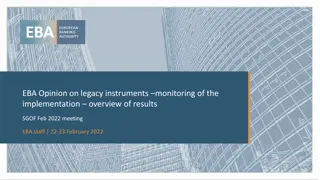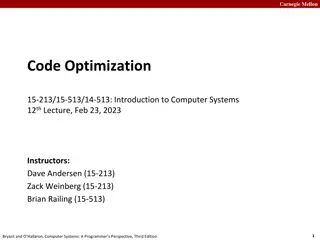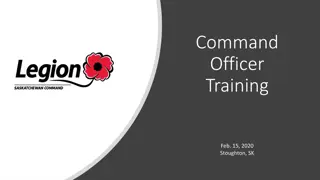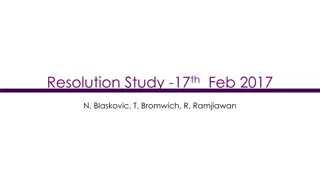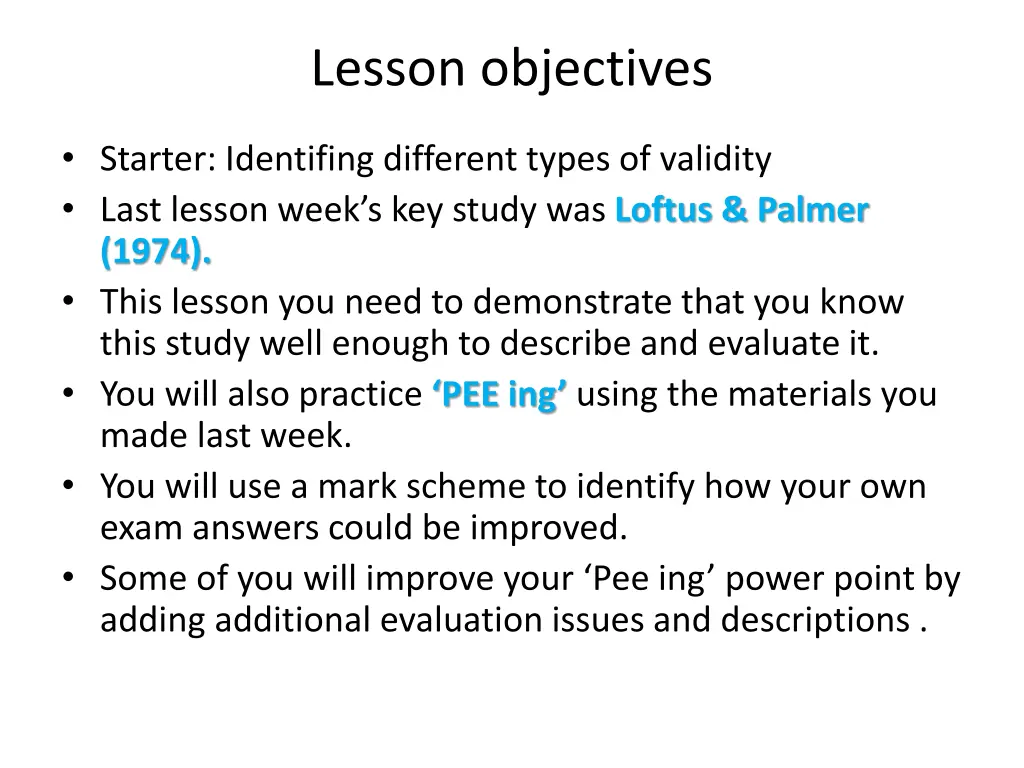
Understanding Loftus & Palmer (1974) Study: Validity and Reliability Evaluation
Explore the Loftus & Palmer (1974) study on eyewitness testimony, delving into the evaluation of its validity and reliability. Analyze key findings, evaluate strengths and weaknesses, and link them to the study for a comprehensive understanding.
Download Presentation

Please find below an Image/Link to download the presentation.
The content on the website is provided AS IS for your information and personal use only. It may not be sold, licensed, or shared on other websites without obtaining consent from the author. If you encounter any issues during the download, it is possible that the publisher has removed the file from their server.
You are allowed to download the files provided on this website for personal or commercial use, subject to the condition that they are used lawfully. All files are the property of their respective owners.
The content on the website is provided AS IS for your information and personal use only. It may not be sold, licensed, or shared on other websites without obtaining consent from the author.
E N D
Presentation Transcript
Lesson objectives Starter: Identifing different types of validity Last lesson week s key study was Loftus & Palmer (1974). This lesson you need to demonstrate that you know this study well enough to describe and evaluate it. You will also practice PEE ing using the materials you made last week. You will use a mark scheme to identify how your own exam answers could be improved. Some of you will improve your Pee ing power point by adding additional evaluation issues and descriptions .
What is EWT? An eye witness is anyone who has witnessed an event (usually a crime). Testimony is a statement given by the witness as an account of what happened.
Outline the findings (r +/or c) of Loftus & Palmer (1974)
The critical question was How fast were the cars going when they Smashed Collided Bumped Hit Contacted each other?
Results Smashed Collided 39 mph Bumped 38 mph Hit 34 mph Contacted 31.8 mph 40.8 mph So what can be concluded from these findings?
Evaluate Loftus & Palmer (1974) in terms of validity Consider which validity you will comment on External or Internal or both? Explain what the evaluation issue means and why it matters (EXPLANATION) In terms of the study is validity a strength or a weakness of Loftus & Palmer (1974)? (POINT) Explain why it is a strength or a weakness of Loftus & Palmer (1974) by providing a suitable example from the study be specific tie your answer to the study (EVIDENCE)
Evaluate Loftus & Palmer (1974) in terms of reliability Explain what the evaluation issue means and why it matters (EXPLANATION) In terms of the study is RELIABILITY a strength or a weakness of Loftus & Palmer (1974)? (POINT) Explain why it is a strength or a weakness of Loftus & Palmer (1974) by providing a suitable example from the study be specific tie your answer to the study (EVIDENCE)
Identify 5 problems of EWT lab based research
What do we know about factors that can affect the reliability of EWT? 5 mins
From our understanding of memory Reconstructive memory Schema driven errors (Carmichael) Reconstructive hypothesis (Bartlett) Effect of leading words/questions Other factors Weapon focus Effects of anxiety/arousal Age of witness Post event information
Reconstructive Memory Bartlett (1932) Memory is not a direct record of what was witnessed. What is encoded and how it is retrieved depends on: Information already stored in memory (schemas) How this info is understood, structured and organised.
Reconstructive Memory Schemas Knowledge structures that relate to commonly encountered objects, situations or people Enable us to predict events, make sense of unfamiliar circumstances, organise our own behaviour Act as filters to perception & recall
Carmichael (1932) Input Schema Output Pickaxe Turf cutter
Computer Information Processing Can you wreck a nice beach? BANG!
Schema Driven Processing Can you wreck a nice beach? Yes. I can recognise speech.
EWT: Schema Driven Errors Witnesses to crimes filter information during acquisition & recall Their schematic understanding may influence how info is both stored & retrieved Distortions may occur without the witness realising
EWT: Schema Driven Errors Past experiences Assumptions about what usually happens Stereotypes & beliefs about crime & criminals







